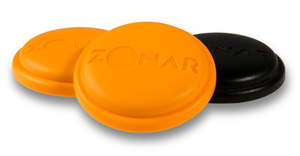COMPOST: Better, Faster, Cheaper Cleanups
April 1, 2000
Jean Schwab
There is an inexpensive and effective method to remediate many contaminated surface waters, soils, air, streams and reservoirs: compost technology/bioremediation.
Mature compost provides an inexpensive, straightforward solution to managing hazardous industrial waste streams and remediating soil contaminated with toxic organic compounds and inorganic compounds.
"An Analysis of Composting as an Environmental Remediation Technology," produced by the Washington, D.C.-based U.S. Environmental Protection Agency's (EPA) Office of Solid Waste, looks at the use of compost for bioremediation. Also, there is an accompanying fact sheet, "Innovative Uses of Compost - Bioremediation and Pollution Prevention" that provides case studies detailing how compost has been used to remediate soil contaminated with heavy metals, organic contaminants and petroleum hydrocarbons contamination. Additionally, the fact sheet notes compost is useful in stormwater management and in the disposal of volatile organic compounds (VOCs) and odor control.
Bioremediation is proving to be effective in degrading or altering contaminants, such as chlorinated and nonchlorinated hydrocarbons, wood-preserving chemicals, solvents, heavy metals, pesticides, petroleum products and even explosives. For example, hydrocarbons, which are common industrial contaminants found in soil and exhaust gas, degrade rapidly during composting. Adding mature compost to contaminated soil accelerates plant and microbial degradation of organic contaminants, and improves plant growth and establishment in toxic soils. Imagine remediating a Brownfield site to an area of green grass, flowers and trees within a few months.
Soil bioremediation includes the reclaiming of soil contaminated by pesticides. Michael Cole, Ph.D., an expert in the degradation of organic contaminants in soil, remediated soil containing 3,000 parts per million (ppm) of Dicamba herbicide to nondetectable levels in 50 days. Cole mixed wood chips and mature compost into soil to make the combined substrate 10 percent (by volume) compost and wood chips, and 90 percent contaminated soil.
Normally, it takes years instead of days for Dicamba degradation to occur, according to Cole.
In addition to speeding up the bioremediation process, using compost also can save money. Traditional remediation by landfilling and incineration can cost up to five times more than bioremediation using composting technology.
Along with soil, stormwater also can be better managed in addition to being remediated. Stormwater runoff is excess water not absorbed by soil after heavy rains flow over roads, parking lots, building roofs, driveways, lawns and gardens. During its journey to streams, lakes and rivers, municipal and industrial stormwater carries many potentially harmful environmental contaminants, such as metals, oil and grease, pesticides, and fertilizers. These types of contaminants pollute rural water and damage areas such as recreational and commercial fisheries.
To comply with the EPA's National Pollutant Discharge Elimination System regulations, municipalities and industries are turning to compost technology instead of expensive traditional treatment methods, such as vegetated filter strips or grassy swales (phytoremediation) and holding ponds. For example, in one industrial area, a holding pond required 3.5 acres and cost $45,000, while a compost stormwater system designed to handle the same amount of runoff, used 0.5 acres, required less maintenance and cost $17,300.
The compost stormwater filter (CSF), one type of bioremediator, is designed to remove floating debris, surface scum, chemical contaminants and sediment from stormwater by allowing these particles to pass through layers of specially tailored compost. The compost's porous structure filters the physical debris while degrading the chemical contaminants. Scum baffles along the side of the unit trap large floating debris and surface films.
This innovative stormwater filtration and bioremediation system uses a relatively small volume of specially tailored compost made from leaves. The compost is formulated to remove more than 90 percent of all solids, 85 percent of oil and grease, and between 82 percent to 98 percent of heavy metals.
A CSF typically has low operating and maintenance costs and can treat large volumes of water - up to 8 cubic feet per second. When the compost filter is no longer effective, it can be removed, tested and recomposted to further remove any contaminants, and used in other compost applications, such as daily landfill covers, because the metals are bound by the compost.
Compost bioremediation technologies also have been developed to remove VOCs that cause disagreeable or harmful odors in air. The process involves passing the contaminated air through a patented, tailored compost. The compost functions as an organic medium containing microorganisms that digest the organic, odor-causing compounds. Industrial facilities have used this compost technology to remove 99 percent of VOCs.
For example, aerosol cans carry residue of paints, lubricants, solvents, cleaners and other products containing VOCs. Aerosol can disposal can be expensive for communities collecting them through household hazardous waste (HHW) programs and for businesses and industries that generate, handle, treat or store these wastes.
On the other hand, vapor-phase biofilters using compost are gaining attention as an alternative technology for treating aerosol cans. This growth is due in part to the high cost of conventional treatment and disposal methods, as well as to new VOC regulations affecting the emissions from hazardous waste storage tanks and containers. Unlike conventional VOC control technologies, such as activated carbon, biofilters actually break down hazardous contaminants into harmless products.
By using a vapor-phase biofilter to remediate more than 38,000 aerosol cans, the Metro Central Household Hazardous Waste collection facility, Portland, Ore., saved $47,000 in hazardous waste disposal costs in 18 months. As a result, its disposal costs were lowered from $505 per drum to $265 per drum (from $2.35 per can to $1.30) because the cans no longer were hazardous.
Bioremediation also has been used for:
* Erosion control and landscaping;
* Reforestation, wetlands restoration, and habitat revitalization; and
* Disease control for plants and animals.
A wide range of cleanup and restoration projects can be completed quicker, cheaper and more effectively using bioremediation. If you are involved in environmental cleanup, consider compost bioremediation before digging, burning or dumping; you may get better results for less money.
For more information, visit www.epa.gov/compost or call the RCRA Hotline toll-free at (800) 424-9346.
You May Also Like


